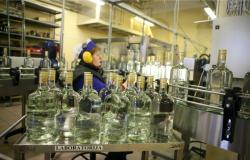In today’s world, electrical equipment has become an integral part of everyday life. However, the rapid progress of technology and the trend dictated by “fast fashion” create new challenges – the consumption of electrical equipment and the volume of waste are growing at lightning speed. This trend threatens the protection of the environment and the sustainable use of resources, creating giant mountains of waste. Perhaps few people think that one of the most effective ways to reduce the rate of depletion of our irreplaceable natural resources is to repair and reuse used machinery.
How do we manage waste in Latvia?
As with many other types of waste, the European Union also sets requirements for the management of used electrical equipment. It states that the best system is the producer responsibility system – a specially created and financed system that ensures the return, recycling and disposal of electrical goods and other products. Every year, 30,000 tons of new electrical equipment enter the Latvian market, which is significantly more than the amount of waste produced by the entire population of Vidzeme, 25,000 tons per year.
The standards of the European Union stipulate that 45% of the volume of electrical goods placed on the market must be collected back. However, significantly higher requirements have been set in Latvia – the amount of returned equipment must be 65%. So every year, out of the 30,000 tons of electrical engineering that enters the market, it is necessary to collect back 20,000 tons. Latvia’s commitment to improving electrical waste management over time has contributed to the development of the e-waste transfer system – there are electrical equipment transfer containers available, as well as various companies, including store chains, and organizations organize various small electrical goods collection campaigns at their own discretion.
With all the effort already put into fighting e-waste reduction and ensuring efficient waste collection, you’d think things would be fine, right? However, this system also has a dark side, which imposes limits on the amount of waste that can be collected. This raises the question of the fate of the remaining amount of waste, which is not always properly managed. An uncontrolled flow of waste creates the risk that a significant amount of it ends up in places where it should not be – in forests, sheds or even household waste bins. It is important to note that not all electrical equipment is equally safe for long-term storage or unattended use, especially those with built-in batteries, liquids or gases. Over time, these materials can begin to leach, creating potential risks to the environment. For example, by storing such equipment in sheds or dumping it in the forest, where there is no hard concrete floor, but the ground, we risk these dangerous substances entering the ground and further – into the groundwater. As a result, careless disposal of electrical equipment can cause significant damage to water and other natural resources.
In some countries, such as the Benelux countries – Belgium, the Netherlands and Luxembourg – this problem is addressed with special care. There is even such an institution as the “waste police” that monitors the proper sorting and recycling of waste electronic and electrical products. Violators may also incur fines.
Fast fashion or equipment repair?
Consumer trends in electrical engineering show that the phenomenon of “fast fashion” has also affected the electrical engineering industry. Often, even functional devices are replaced simply because a newer model appears on the market. The offer of manufacturers is also dominated by cheap electrical goods made of less durable materials. Such devices often have a significantly shorter service life, and repair is often financially unprofitable or even impossible, which reinforces the tendency towards a consumption mentality and waste of resources.
Currently, discussions about the future of electrical engineering are increasingly turning to the idea of a repairability index, which could radically change our decision-making in the purchase of devices. Similar to the energy efficiency label, which is now known on many electrical goods, the planned repairability index would allow consumers to immediately assess how easy or difficult it would be to repair the given device. Perhaps this way it would appear that a slightly cheaper device is more difficult to repair compared to a more expensive alternative, which would nevertheless be more beneficial in the long run.
Although the remediability index is not yet implemented, we are rapidly moving towards this practice. At the moment when this system will be implemented, our repair center “Lab!”, which we have opened in cooperation with “Latvijas Zaļo punktu”, will also be able to invest in its equipment, providing data on the progress and results of the repair work. This means that the repairability index will be built based on real experience and data on how easy or difficult a given device is to repair.
In addition, it turns out that consumers are willing to pay more for equipment with a better repairability index, just as they pay more for a higher energy efficiency class. More than half of the population (57%) supports the purchase of more expensive devices with a higher repairability index, according to the survey data conducted by the environmental management company “Eco Baltia vide” in cooperation with the research center “Norstat”. This indicates that a part of the society is still ready to invest in more sustainable alternatives in order to reduce the negative impact on the environment and extend the life of goods.
Why choose primarily repaired equipment instead of buying new ones right away?
I think it is very important to change the public perception of used electrical engineering. Joint efforts must eradicate the entrenched stereotype that used or refurbished devices are less valuable and unreliable, and instead promote awareness that they are actually a smart choice. For example, for the majority of Latvian residents, it seems completely obvious to buy a slightly used car. And in the same way, used electrical engineering should be perceived as the norm, not the exception. In addition, often tested and repaired equipment is more reliable than new and untried models, especially if they were created under the influence of “fast fashion”.
Many of us don’t even realize that actually using older and less energy-efficient electrical equipment can be a greener choice than throwing it away and buying a new one. The manufacturing process of new equipment consumes much more resources than during the repair of the device, so using even the previous generation of equipment serves as a saving of resources, not a waste. Of course, the aspect of safety and health must always be taken into account, for example, let’s not use very old refrigerators anymore, because the freon in them is harmful to the ozone layer. However, there are many cases where repair can give a device a second life without any negative impact on health or the environment, such as sewing machines that have been in circulation for a long time. Therefore, when evaluating the possibilities of repairing electrical equipment, it is necessary to consider not only the physical condition and safety aspects of the device, but also its potential sustainability and positive impact on resource conservation.
One of the important nuances when looking at the consumption and sustainability of electrical equipment in Latvia is that we ourselves do not produce the equipment that is sold in our market. Exceptions are some high-quality products, such as microphones, routers and other equipment, which, although manufactured in Latvia, are mainly exported to foreign countries, such as the USA. Thus, by purchasing any new electrical equipment, we largely support the foreign economy. However, by choosing to buy repaired or refurbished goods in Latvia, we promote the local economy by supporting local jobs, employee salaries and social contributions. This is not only a way to boost the internal economy, but also an opportunity to do so in a sustainable and financially beneficial way.
We have also talked with the Ministry of Environmental Protection and Regional Development about promoting the circulation of used equipment in the consumer environment, inspired by the practice of other countries. For example, one proposed idea is to give tax credits to used machinery and their spare parts, thus supporting the repair industry and making it more financially beneficial for both sellers and consumers. Currently, it is not financially profitable to repair many devices, and it is completely illogical to sell used equipment at a higher price than new goods with a warranty. Therefore, the state, using financial instruments, should introduce such practices to promote not only ecological but also economic benefits. By stimulating reuse, the country could more effectively achieve the set goals in the field of environmental protection and promote more sustainable consumption.
Will we pay more in the future because of our inaction?
Unfortunately, some people often do not put electrical equipment in their designated places, wrongly believing that it is troublesome, time-consuming or even expensive. Similarly, the force of habit and reluctance to change one’s habits also have a great influence, so most tend to excuse the lack of information about transfer options and the sorting process.
Taking into account the laziness of society in waste management and a certain submission to the burden of “fast fashion”, an increase in waste removal fees could be inevitable in the future, taking into account several factors: the amount of generated waste will increase, which will require additional funds for the development and maintenance of management systems; stricter environmental protection standards and more efficient waste processing methods will increase costs; and global initiatives for sustainable resource use may introduce new regulations and taxes. In order to avoid this, it is necessary to urgently start changing the approach to waste generation and management, as well as start considering the purchase of used equipment. In addition to all this, it must be understood that natural resources are becoming more and more limited, and consumers who want to maintain a high quality of life must inevitably adopt sustainable lifestyle choices. For example, the production of modern technologies such as smartphones requires rare precious metals and resources that are in limited supply. If we want to use technologies of increased efficiency in the future, we must give the opportunity to repair electrical appliances and purchase used equipment.
By creating a society that is aware of the consequences of waste generation and actively engages in its reduction and efficient management, we can not only reduce future financial burdens, but also promote a healthier and more sustainable environment. This requires both individual and societal commitment to change our usual consumption patterns and to develop a more responsible attitude towards the resources available to us.
Jānis Aizbalts, chairman of the board of SIA “Eco Baltia vide”.
LIFE integrated project “Waste as resources in Latvia – Promotion of regional sustainability and circulation by introducing the concept of using waste as resources” (LIFE WasteTo Resources IP, LIFE20 IPE/LV/000014) is implemented with the financial support of the LIFE program of the European Union and the State Regional Development Agency. www.wastetoresources.varam.gov.lv
The publication was created within the framework of the habit change campaign “Give the chance to improve”, which is implemented by the environmental management company “Eco Baltia vide” in cooperation with “Latvijas Zaļo punktu”, “Maxima Latvija” and “Tet”.
*The “Norstat Latvija” survey was conducted in February this year, with the participation of 1,003 residents aged 18 to 74.






